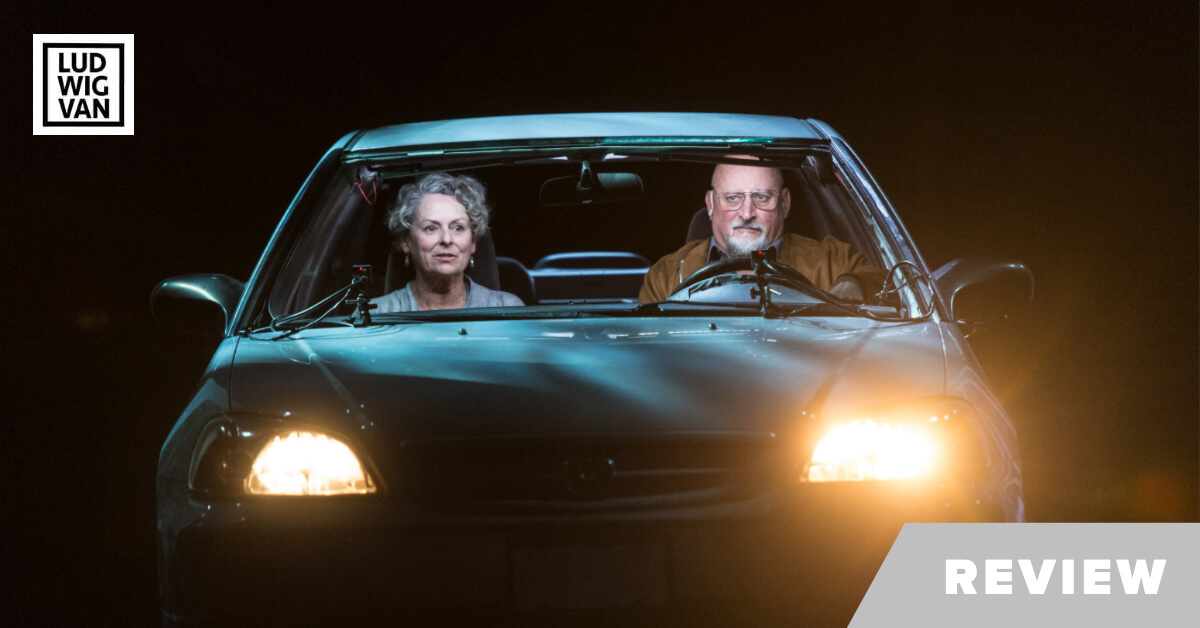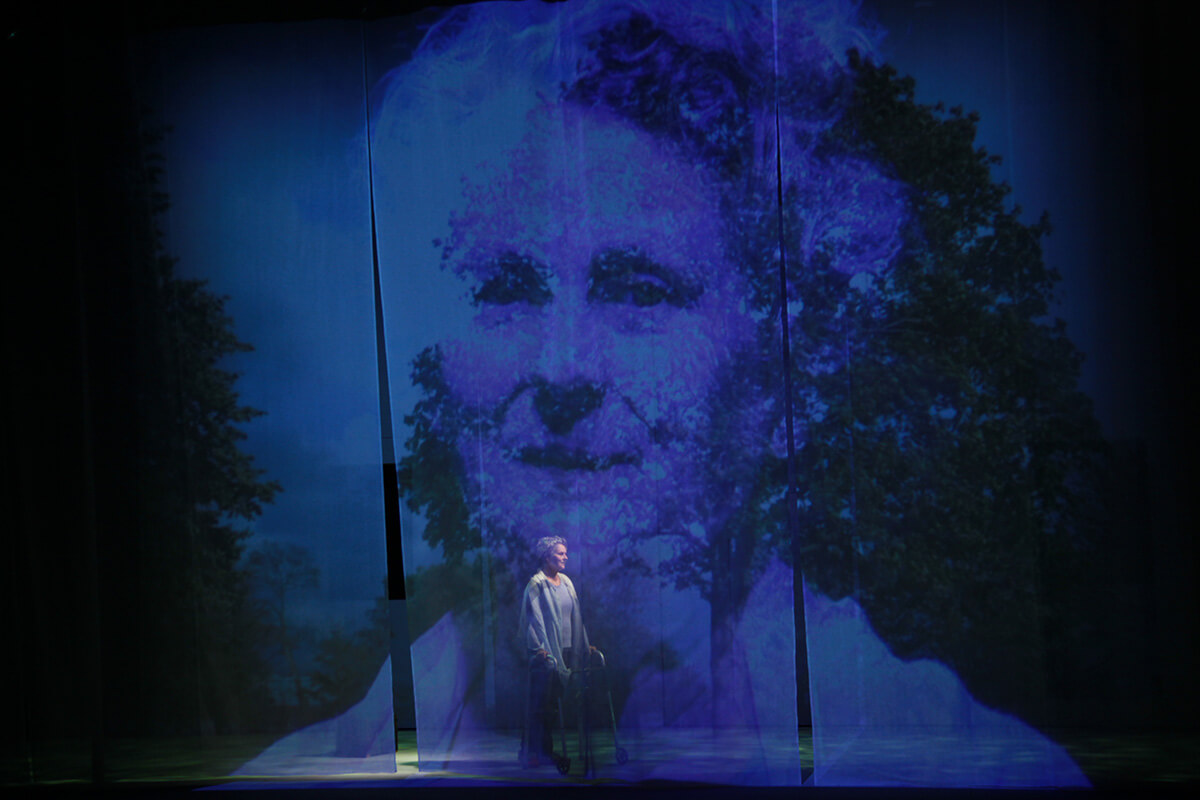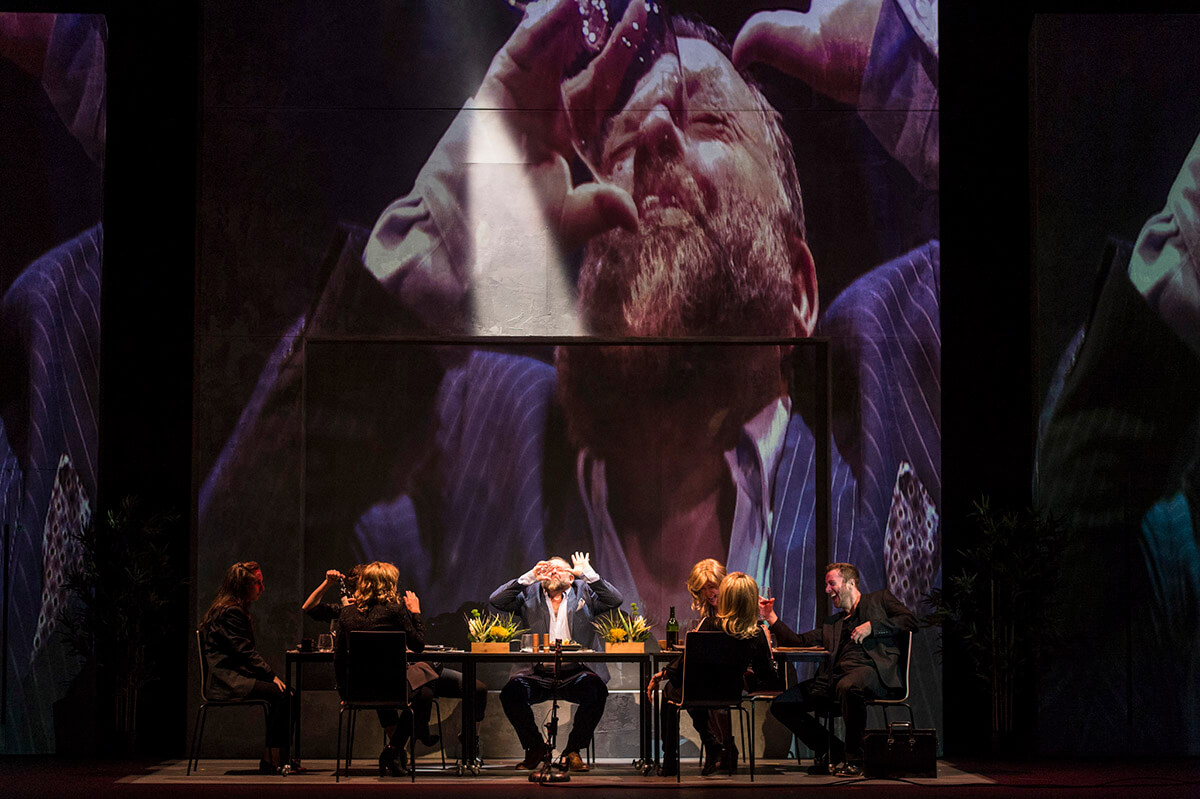
Luminato: Canadian Stage & Electric Company Theatre/The Full Light of Day by Daniel Brooks, directed by Kim Collier, Bluma Appel Theatre, Jun. 7 to 13. Tickets available at canadianstage.com.
What happens when you put two revered Siminovitch Prize winners together? The answer is creativity to the max. Once again director Kim Collier has brought her unique brand of cinema-theatre to town manifested in the epic and breath-taking sweep of her storytelling. Her collaborator is Daniel Brooks, known for profound plays that provocatively expose the human condition in all its moral and ethical dilemmas. The Full Light of Day is the glorious flowering that has burst forth out of the collaboration between these two visionary theatre artists.
Before we get to the actual plot and characters, we must first talk about Collier’s style, which I call cinema-theatre. Simply put, it is a combination of film and live-action, but in truth, the technology behind this show is mind-boggling. Film sequences and still projections help define place such as the rustling trees of a country home, or the wine racks of a toney restaurant. Livecams provide close-ups, while split screens give differing perspectives. For example, a person may be talking in the live-action, but it is the listener whose reaction appears onscreen. The livecams also give us the intimacy that helps bridge the gap between audience and stage. Thus we are privy to both the outer words and the inner thoughts of the characters, all at the same time. The production is at once a linear narrative and a stream of consciousness. Kudos to Collier’s design team — Kevin Kerr (VR filmmaker), Michael Walton (lighting), Julie Fox (set), Brian Johnson (projection), Nancy Bryant (costumes), Peter Allen (composer) and Brian Linds (sound). Fox’s clever set is particularly noteworthy.

Brooks’ plots are often deceptively simple. In this case, we meet Harold (the great Jim Mezon), a shady real estate mogul with gangster-like tendencies. His wife Mary (Gabrielle Rose – who has to speak louder) has enjoyed a privileged life financed by Harold’s ill-gotten gains, but on her deathbed, gets an attack of conscience. It is her rebellion against the perverted values of her family that is the play’s McGuffin. The couple has three troubled children, David (Dean Paul Gibson), Jane (Jenny Young), and Joey (Jonathon Young), whose own failings complicate their parents’ lives. David’s wife Sherry (Jillian Fargey) seems to be the only one who has a keen grasp on reality. Henry Bolan (Jake) and Eponine Lee (Lorna) give a good account of themselves as David and Sherry’s children. Gibson, the two Youngs and John Ng perform multiple roles as needed, augmented by a four-member ensemble. The acting talents of this mostly Vancouver-based cast is very impressive indeed. The charismatic Mezon has to be singled out because he electrifies the stage with his presence. Jonathon Young is also a standout as both hapless Joey, and a fire and brimstone evangelical preacher.

Brooks’s script is flawed brilliance. He has always been a masterful creator of character and relationships, and Mary, Harold, David and Sherry are particularly richly drawn. We really do get to know this family. Brooks, however, does falter on Jane, and to a lesser extent Joey. In the former case, we know her husband died under mysterious circumstances, and that she has been in perpetual mourning ever since, but the reason behind her estrangement from her family is barely hinted at. We gather that Joey is feckless, but Brooks keeps him on a two-dimensional plane with much of his motivation left unexplained. The ending itself is surprisingly weak. That being said, Brooks’ trademark wry humour, ironic language and surprising plot twists are always a delicious treat, as are his intriguing time shifts and clever use of repeated scenes.
A play about society’s complicity in corruption and the perversion of our ethical values is certainly relevant to the temper of the times. Harold and David’s real estate empire has been built on the backs of bribes and cheating, but Brooks is saying that these practices are commonplace today. His message would seem to be that it takes an extraordinary soul like Mary to find humanity’s lost compassion. Truth be told, however, as compelling as Brooks’ storyline is, it is the spectacle of Collier’s imaginative cinema-theatre that is the star of the show.
LUDWIG VAN TORONTO
Want more updates on classical music and opera news and reviews? Follow us on Facebook, Instagram or Twitter for all the latest.
- INTERVIEW | Actor Diego Matamoros Takes On Icon Walt Disney In Soulpepper Production Of Hnath Play - April 16, 2024
- SCRUTINY | Opera In Concert Shine A Light On Verdi’s Seldom Heard La Battaglia Di Legnano - April 9, 2024
- SCRUTINY | Lepage & Côté’s Hamlet Dazzles With Dance And Stagecraft Without Saying Anything New - April 5, 2024



